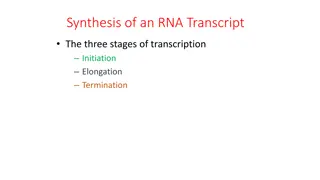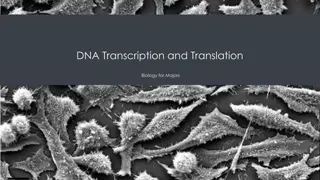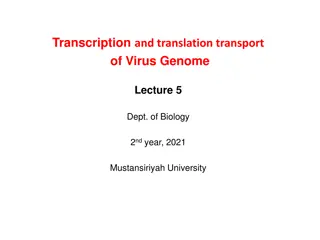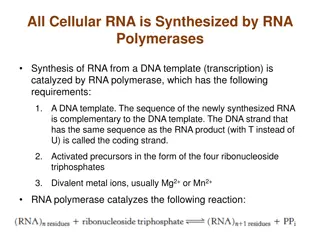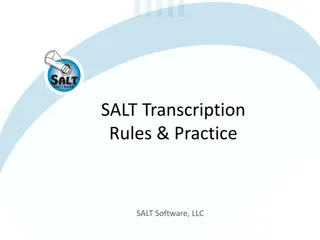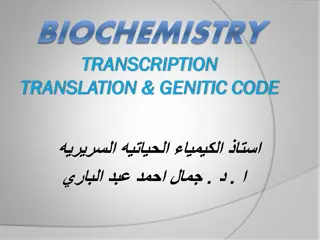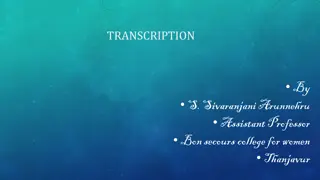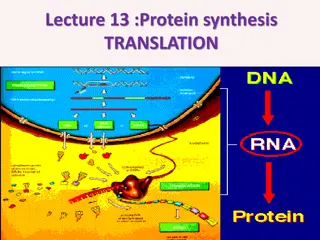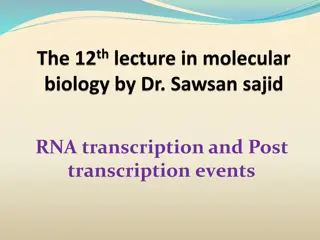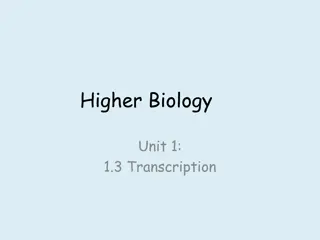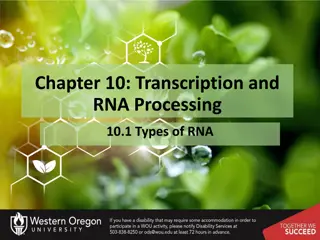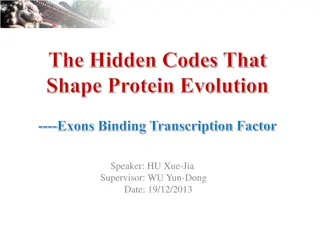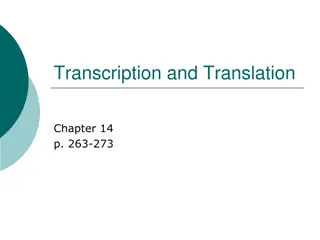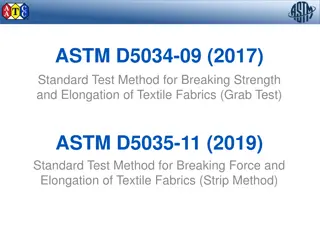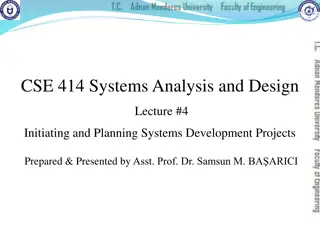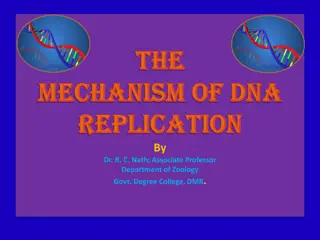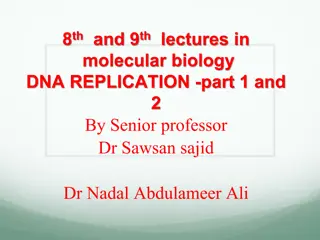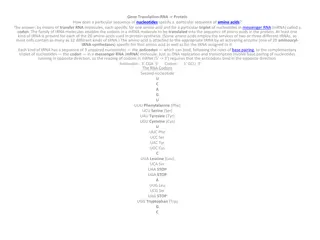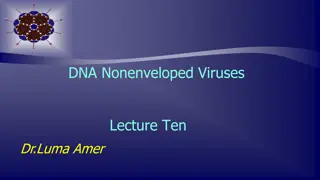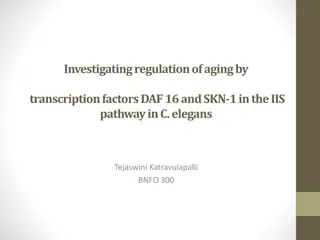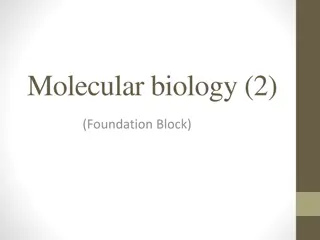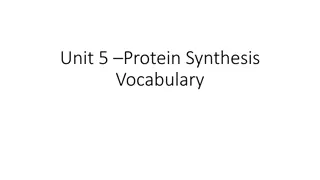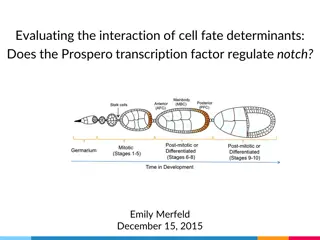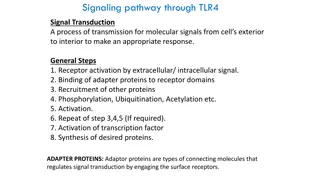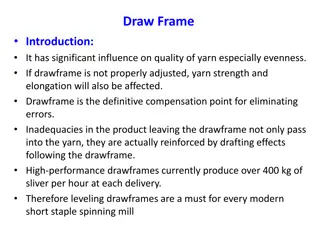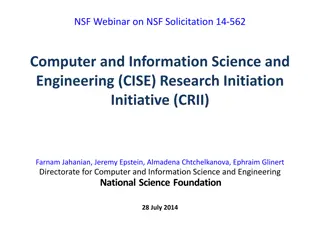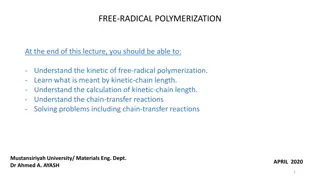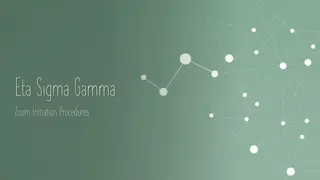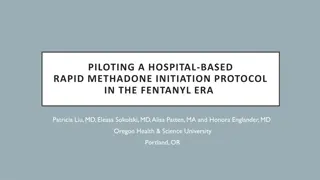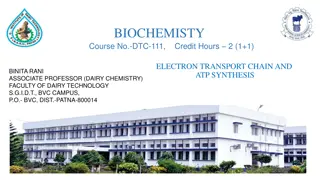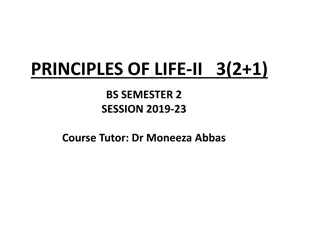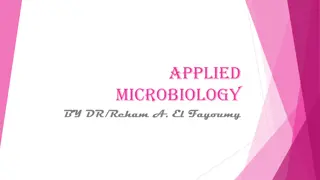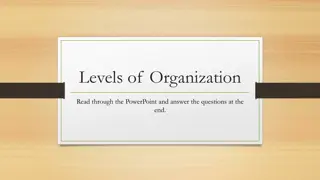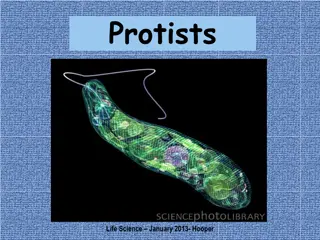Transcription Initiation and Elongation in Eukaryotes Explained
Transcription initiation in eukaryotes involves RNA Polymerase II, general transcription factors, and Mediator complex to communicate with activators. Chromatin remodeling complexes and histone-modifying enzymes play pivotal roles in transcription regulation. Elongation requires different factors and involves a transition from initiation, showcasing the importance of the RNAP II CTD and various protein complexes like Elongator.
Download Presentation

Please find below an Image/Link to download the presentation.
The content on the website is provided AS IS for your information and personal use only. It may not be sold, licensed, or shared on other websites without obtaining consent from the author. Download presentation by click this link. If you encounter any issues during the download, it is possible that the publisher has removed the file from their server.
E N D
Presentation Transcript
Transcription Initiation by RNA Polymerase II Requires TBP and the GTFs A eukaryotic transcription initiation complex consists of RNA polymerase II, five general transcription factors (GTFs), and a 20-subunit complex called Mediator (or Srb/Med). The CTD of RNA polymerase II anchors Mediator to the polymerase. Mediator allows RNA polymerase II to communicate with transcriptional activatorsbound at sites distal from the promoter The upstream elements and the factors that bind to them increase the frequency of initiation. Binding of TFII D to the TATA box or Inr is the first step in initiation. Other transcription factors bind to the complex in a defined order, extending the length of the protected region on DNA. When RNA polymerase II binds to the complex, it may initiate transcription.
Two sets of factors are important: chromatin remodeling complexes that mediate ATP- dependent conformational (noncovalent) changes in nucleosome structure and histone- modifying enzymes that introduce covalent modifications into the N-terminal tails of the histone core octamer. Chromatin remodeling and histone modification are closely linked processes. Initial events in transcriptional activation include acetyl-CoA dependent acetylation of -amino groups on lysine residues in histone tails by histone acetyltransferases (HATs) . The histone transacetylases responsible are essential components of several megadalton-size complexes known to be required for transcription coactivation (co-activation in the sense that they are required along with RNA polymerase II and other components of the transcriptional apparatus). Phosphorylation of Ser residues and methylation of Lys residues in histone tails also contribute to transcription regulation Deacetylation of histones is a biologically relevant matter, and enzyme complexes that carry out such reactions have been characterized. Known as histone deacetylase complexes, or HDACs, they catalyze the removal of acetyl groups from lysine residues along the histone tails, restoring the chromatin to a repressed state.
Elongation Elongation Requires Different Transcription Factors. After RNAP II initiates RNA synthesis and successfully produces a short transcript, the transcription machinery undergoes a transition to the elongation mode. The switch appears to involve displacement of the finger domain of TFIIB, which would otherwise clash with the growing RNA chain in the active site, as well as phosphorylation of the C-terminal domain (CTD) of RNAP II s Rpb1 subunit. Phosphorylated RNAP II releases some of the transcription-initiating factors and advances beyond the promoter region. In fact, when RNAP II moves away from ( clears ) the promoter, it leaves behind some GTFs, including TFIID. These proteins can reinitiate transcription by recruiting another RNAP II to the promoter. Consequently, the fi rst RNAP to transcribe a gene may act as a pioneer polymerase that helps pave the way for additional rounds of transcription. During elongation, a six-protein complex called Elongator binds to the phosphorylated CTD of Rpb1, taking the place of the jettisoned transcription factors. Although Elongator is not essential for transcription by RNAP II in vitro, its presence accelerates transcription. Interestingly, TFIIF and TFIIH remain associated with the polymerase during elongation. Well over a dozen other proteins are known to associate with an elongating RNAP II. Some of the proteins are involved in processing the nascent RNA, modifying the packaging of the DNA template, and terminating transcription.
Termination Eukaryotes Lack Precise Transcription Termination Sites. The sequences signaling transcriptional termination in eukaryotes have not been identified. This is largely because the termination process is imprecise; that is, the primary transcripts of a given structural gene have heterogeneous 3 sequences. However, a precise termination site is not required because the transcript undergoes processing that includes endonucleolytic cleavage at a specifi c site . The endonuclease may act even while the polymerase is still transcribing, so RNA cleavage itself may signal the polymerase to stop.
References 1. 4.Kreb s et al (2018)Lewin s Genes XII .JONES 2.Alberts B.et al(2008) Molecular biology of the cell.5th ed. Garland Science Taylor & Francis Group 3. Nelson D.L. & Cox M.M.(2013) Lehninger Principles of Biochemistry .6th ed.W. H. Freeman and Company 4.Voet et al(2016)Fundamentals of Biochemistry.5th ed.Wiley 5. .Garrett R.H.&Grisham C. M.(2010)Biochemistry.4th ed.Brooks/Cole Cengage Learning & BARTLETT LEARNING


